Submitted:
19 April 2024
Posted:
22 April 2024
You are already at the latest version
Abstract
Keywords:
1. Introduction
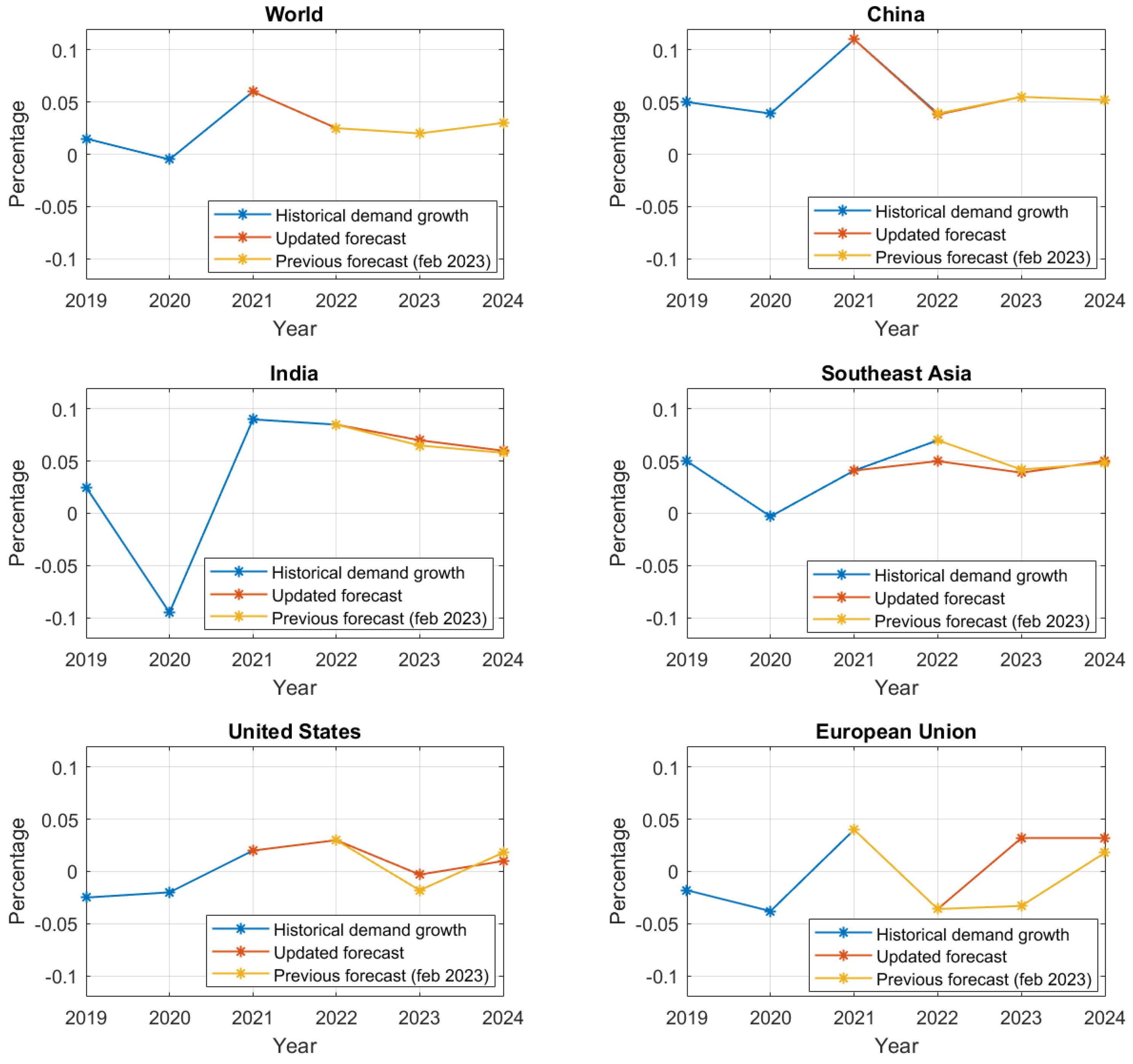
2. Electric Power Generation in Peru
2.1. Structure of Peruvian Electricity Generation
2.2. Analysis of Electric Power Generation
2.3. Analysis of Electric Power Demand
2.4. Relevant Information about the Energy Sector in Peru
3. Methodology
3.1. Structure of the LEAP Model in Peru
3.2. Base Values and Assumptions for the Peruvian LEAP Model
3.3. Description of the Scenario Design
3.3.1. S1: Business-as-Usual
3.3.2. S2: Energy Efficiency
3.3.3. S3: Geothermal Energy
4. Results and Discussions
4.1. Projection of the Total Demand for Electrical Energy
4.2. Projection of Installed Capacity for Demand
4.3. Projection of Carbon Dioxide Equivalent Emissions CO2e
5. Conclusions
- The study analyzes the energy demand, installed capacity, and emissions (CO2e) of the electric mix in Peru, through three scenarios defined as the Business-as-Usual scenario, denoted as S1, the Energy Efficiency scenario, denoted as S2, and the Geothermal Energy scenario, denoted as S3.
- Scenario S2, developed considering energy efficiency, builds upon scenario S1 but includes investment in technology and reduction of transformation and distribution losses.
- The results of scenario S2 reveal that the country would experience lower energy demand over time, highlighting its efficiency compared to scenario S3. The latter, which proposed the implementation of geothermal energy as the main strategy, without specifically considering energy efficiency. Scenario S2 stands out by focusing on technological improvements and energy efficiency, resulting in an optimization of energy consumption over time. In contrast, scenario S3, by focusing on the introduction of geothermal energy as the main innovation, could face challenges in terms of the overall efficiency of the system.
- Under a more detailed evaluation, it is observed that scenario S3, despite expectations, presented long-term results that are lower in terms of installed capacity. This result becomes evident when analyzing the last 5 years (2045-2050), a period in which scenario S3 demonstrated requiring a lower amount of energy compared to scenarios S1 and S2. Additionally, scenario S3 reflects not only superior energy efficiency but also a substantial reduction in greenhouse gas emissions during the same period of 2045-2050, compared to scenarios S1 and S2.
- Finally, the exclusion of energy efficiency considerations in the evaluation of scenario S3 aims to analyze its advantages and disadvantages impartially. While scenario S2 highlights improvements by focusing on technological investments and energy efficiency without incorporating new energy sources, the idea is raised that optimal implementation could arise from combining both strategies. Furthermore, the inclusion of geothermal energy as a new energy source is presented as a viable option that can complement and enhance improvements derived from energy efficiency technologies.
- These results underscore the importance of considering not only new energy sources, such as geothermal, but also strategies that improve energy efficiency at all levels of the system.
References
- Naciones Unidas, Climate Change. ¿Qué es el cambio climático?
- Naciones Unidas, Home Energy. Su guía de acción contra el cambio climático: la energía en su hogar: Su guía de acción contra el cambio climático: la energía en su hogar.
- International Energy Agency. Electricity Market Report Update: Outlook for 2023 and 2024. IEA.
- British Petroleum. Energy Outlook 2020 Edition.
- Dalia Streimikiene.; Zaneta Simanaviciene.; Ruslan Kovaliov. Corporate social responsibility for implementation of sustainable energy development in Baltic States. Renewable and Sustainable Energy Reviews 2009, 13, 813–824. [CrossRef]
- Seung-Hoon Yoo.; So-Yoon Kwak. Electricity consumption and economic growth in seven South American countries. Energy Policy 2010, 38, 181–188. [CrossRef]
- Kale, R.V.; Pohekar, S.D. Electricity demand and supply scenarios for Maharashtra (India) for 2030: An application of long range energy alternatives planning. Energy Policy 2014, 72, 1–13. [Google Scholar] [CrossRef]
- McPherson, M.; Karney, B. Long-term scenario alternatives and their implications: LEAP model application of Panama’s electricity sector. Energy Policy 2014, 68, 146–157. [Google Scholar] [CrossRef]
- Perwez, U.; Sohail, A.; Hassan, S.F.; Zia, U. The long-term forecast of Pakistan’s electricity supply and demand: An application of long range energy alternatives planning. Energy 2015, 93, 2423–2435. [Google Scholar] [CrossRef]
- Vidoza, J.A.; Gallo, W.L. Projection of fossil fuels consumption in the Venezuelan electricity generation industry. Energy 2016, 104, 237–249. [Google Scholar] [CrossRef]
- Bautista, S. A sustainable scenario for Venezuelan power generation sector in 2050 and its costs. Energy Policy 2012, 44, 331–340. [Google Scholar] [CrossRef]
- Pirker, G.; Wimmer, A. Sustainable power generation with large gas engines. Energy Conversion and Management 2017, 149, 1048–1065. [Google Scholar] [CrossRef]
- Vandewalle, J.; Bruninx, K.; D’haeseleer, W. Effects of large-scale power to gas conversion on the power, gas and carbon sectors and their interactions. Energy Conversion and Management 2015, 94, 28–39. [Google Scholar] [CrossRef]
- Naciones Unidas, Paris Agreement. El Acuerdo de París.
- Naciones Unidas, Kyoto Protocol. ¿Qué es el Protocolo de Kyoto?
- International Renewable Energy Agency. Renewable Energy Market Analysis - Latin América. IRENA.
- CIA World Factbook. Consumption of Electricity per Capita by Country-Comparative Map of Countries-South, 2020.
- Osinergmin. La industria de la electricidad en el Perú, 25 años de aportes al crecimiento económico del país; 2017.
- Demographia. Demographia world urban areas (Built Up urban areas or World Agglomerations).
- Instituto Nacional de Estadística e Informática. Electrificación: Acceso a los servicios básicos en el Perú. INEI 2021.
- Perupetro S.A.. Estadística anual de hidrocarburos 2022.
- Ministerio de Energía y Minas. Revista estadística En cifras - Electricidad.
- Revista Energía. Energías renovables: El futuro de la electricidad.
- Revista Energiminas. EDC Perú: «La prioridad son los dos proyectos geotérmicos, de más de US$1.000 millones». 2020.
- Naciones Unidas, Sustainable Development. Desarrollo Sostenible.
- Banco Central de Reserva del Perú. Estimaciones del balance oferta – demanda en el sector eléctrico 2021 - 2024.
- Organismo Supervisor de la Inversión en Energía y Minería, Renovables. Energías Renovables, experiencia y perspectivas en la ruta del Perú hacia la transición energética 2019.
- Organismo Supervisor de la Inversión en Energía y Minería, Cambio Climatico. La industria de la energía renovable en el Perú, 10 años de contribuciones a la mitigación del cambio climático.
- Organismo Supervisor de la Inversión en Energía y Minería, Statistics. Reporte estadístico, sector eléctrico.
- ENGIE. ENGIE to replace 1 GW of coal assets with 1 GW of renewables.
- Diario Expreso. Engie cierra central termoeléctrica de Ilo 2020.
- ENGIE. Memoria Anual 2019.
- Ministerio de Energía y Minas. Anuarios estadísticos 2020 - 2022.
- Apoyo & Asociados.
- Instituto Nacional de Estadística e Informática. Estado de la población peruana 2020.
- Energiminas. Centrales hidroeléctricas Manta (Áncash) y San Gabán III (Puno) estarán listas en 2023 2020.
- Ministerio de Energía y Minas. Política Energética Nacional del Perú 2010 - 2040 2020.
- Rumbo Minero. INEI: Producción del sector Minería e Hidrocarburos creció 5,17% en agosto.
- Camisea. ¿Qué es Camisea?
- Lee, E.; Hengesh, J.; Nyman, D. Landslide-related ruptures of the Camisea pipeline system, Peru. Quarterly Journal of Engineering Geology and Hydrogeology - Q J ENG GEOL HYDROGEOL 2009, 42, 251–259. [Google Scholar] [CrossRef]
- Heaps, C.G. . LEAP: The Low Emissions Analysis Platform. [Software version: 2020.1.112] Stockholm Environment Institute. Somerville, MA, USA. https://leap.sei.org.
- Nieves, J.A.; Aristizábal, A.J.; Dyner, I.; Báez, O.; Ospina, D.H. Energy demand and greenhouse gas emissions analysis in Colombia: A LEAP model application. Energy 2019, 169, 380–397. [Google Scholar] [CrossRef]
- Mirjat, N.H.; Uqaili, M.A.; Harijan, K.; Walasai, G.D.; Mondal, M.A.H.; Sahin, H. Long-term electricity demand forecast and supply side scenarios for Pakistan (2015–2050): A LEAP model application for policy analysis. Energy 2018, 165, 512–526. [Google Scholar] [CrossRef]
- Chen, R.; Rao, Z.; Liu, G.; Chen, Y.; Liao, S. The long-term forecast of energy demand and uncertainty evaluation with limited data for energy-imported cities in China: a case study in Hunan. Energy Procedia 2019, 160, 396–403. [Google Scholar] [CrossRef]
- Rivera-González, L.; Bolonio, D.; Mazadiego, L.F.; Naranjo-Silva, S.; Escobar-Segovia, K. Long-Term Forecast of Energy and Fuels Demand Towards a Sustainable Road Transport Sector in Ecuador (2016–2035): A LEAP Model Application. Sustainability 2020, 12, 472. [Google Scholar] [CrossRef]
- Rumbo Minero. Potencial geotérmico peruano equivale al 50% de la electricidad que producimos 2020.
- Ministerio de Energía y Minas. Plan energético Nacional 2014 - 2025 2021.
- Rumbo Minero. Implementación de nueva tecnología 2022.
- Statkraft. Solar Lab en Junín permitirá evaluar tres nuevas tecnologías fotovoltaicas en zona alta del Perú 2021.
- Revista Energía. La energía geotérmica es una oportunidad de oro para el Perú 2022.
- Seequent. Combustible verde a partir de energía verde: cómo la energía geotérmica puede producir hidrógeno 2022.
- ENEL Green Power. Todas las ventajas de la energía geotérmica. ENEL.
- van der Molen, J.; Peters, E.; Jedari-Eyvazi, F.; van Gessel, S.F. Dual hydrocarbon–geothermal energy exploitation: potential synergy between the production of natural gas and warm water from the subsurface. Netherlands Journal of Geosciences 2019, 98. [Google Scholar] [CrossRef]
- Universidad Complutense de Madrid. Huella de carbono 2018 - 2020 2020.
- ONU Programa para el Medio Ambiente. Anexo Metodología.
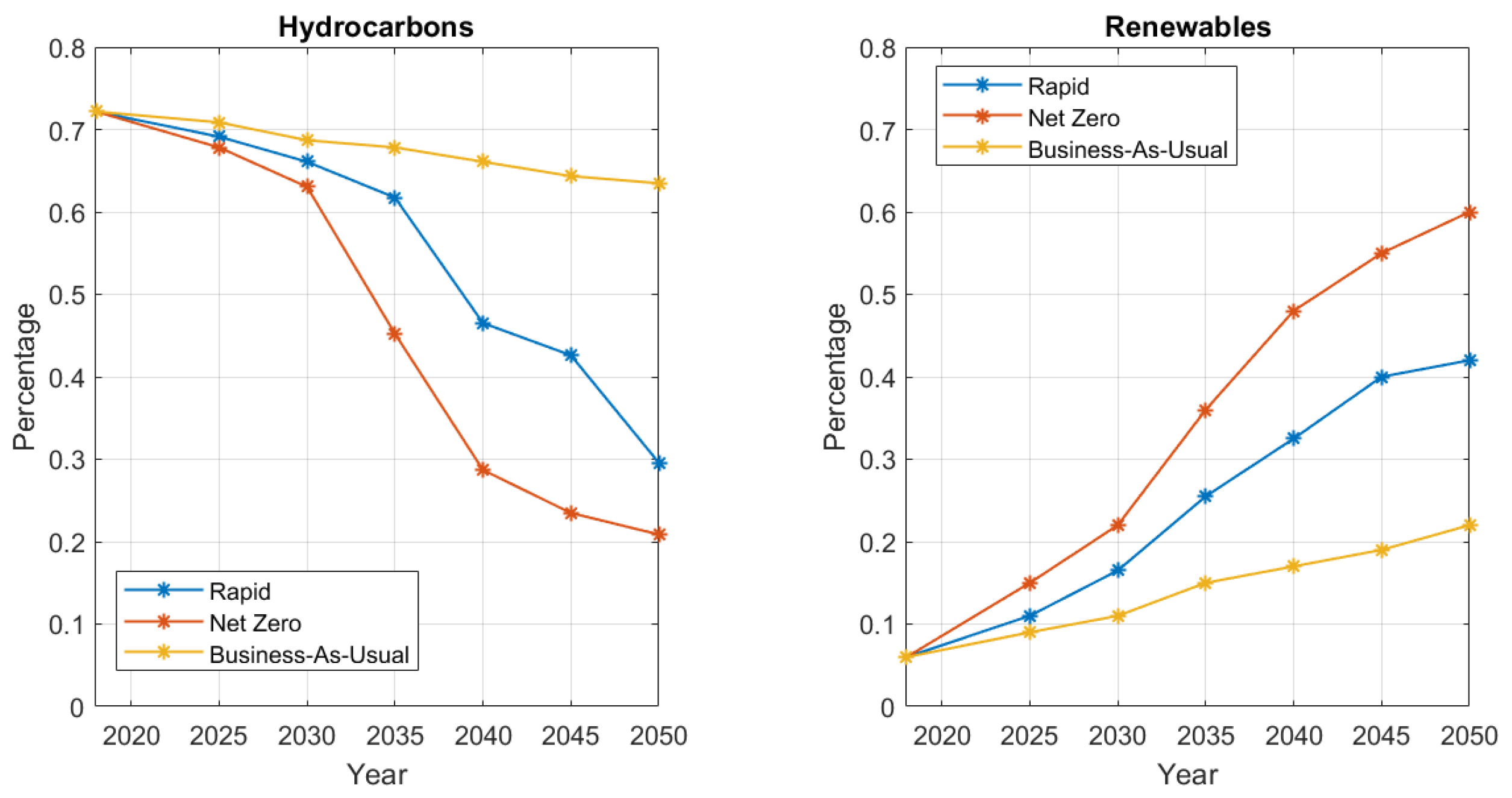
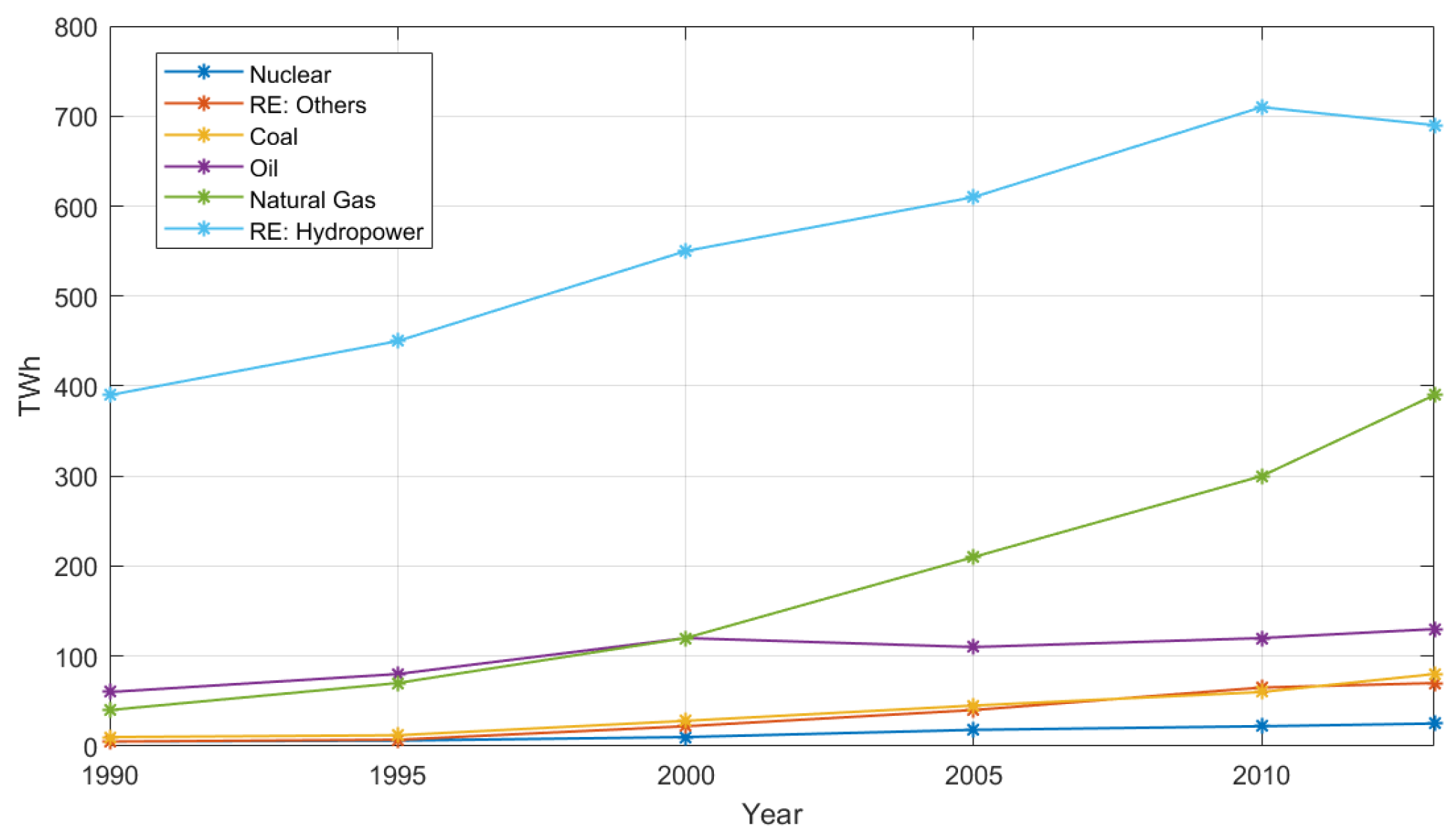
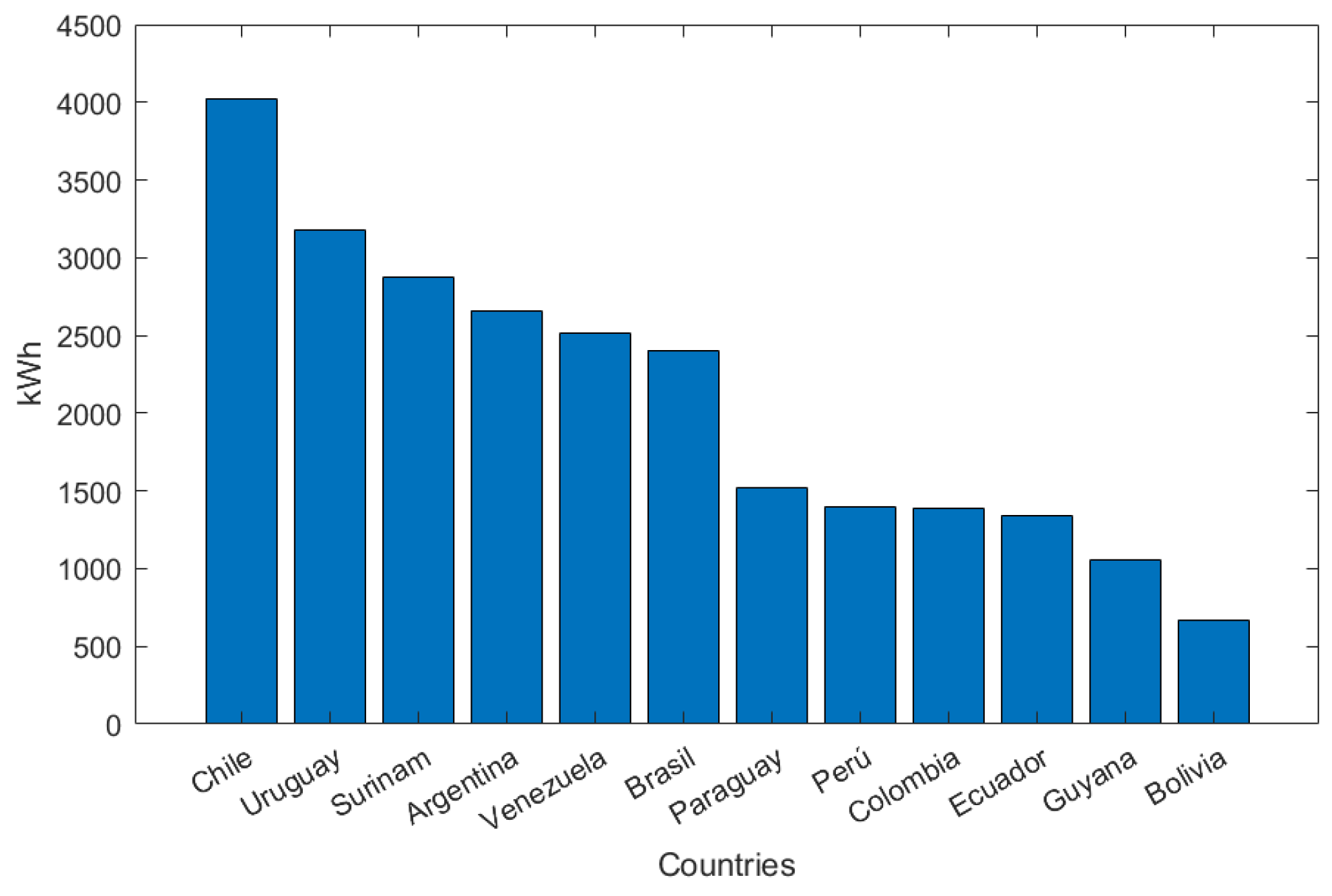
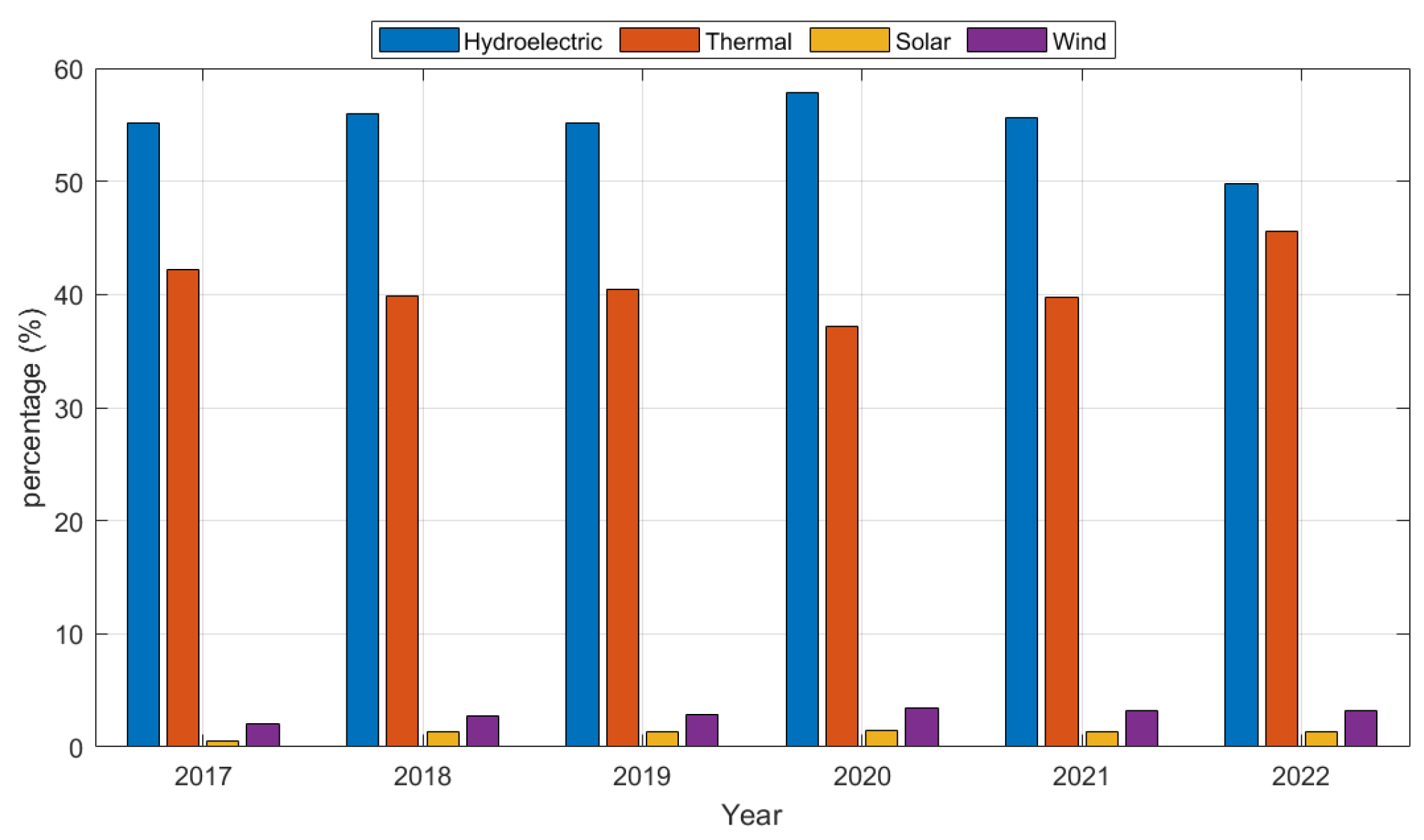
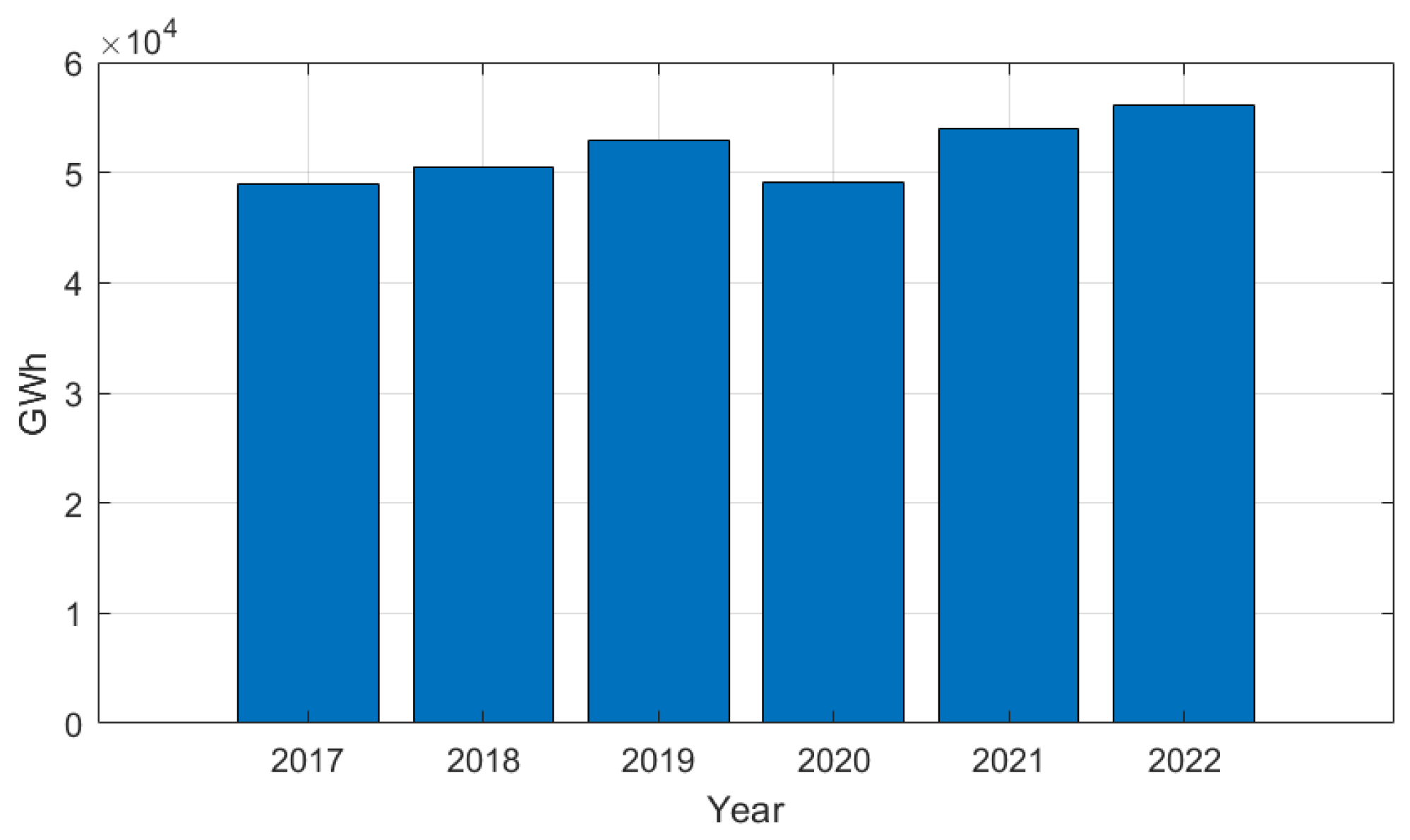
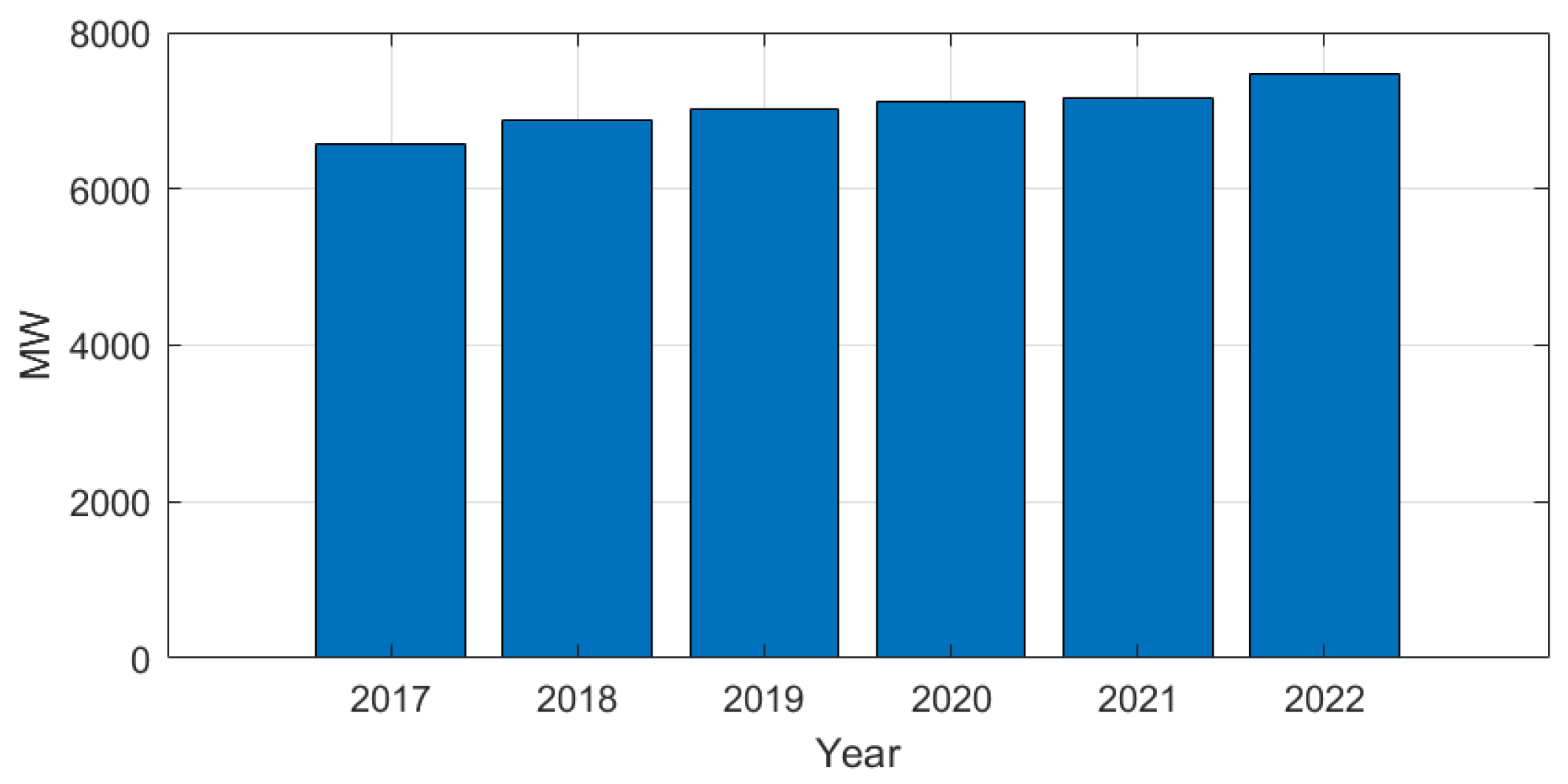
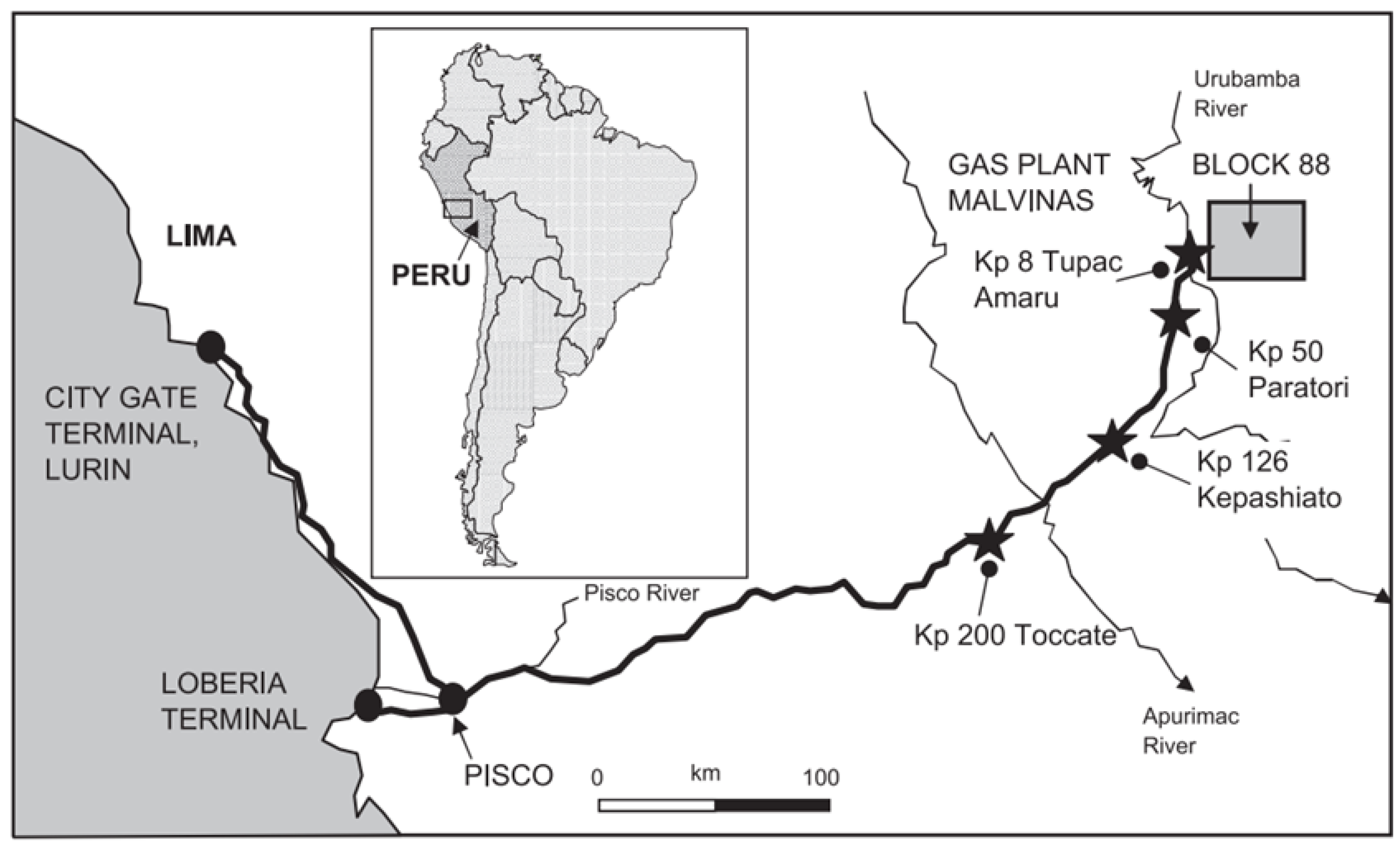
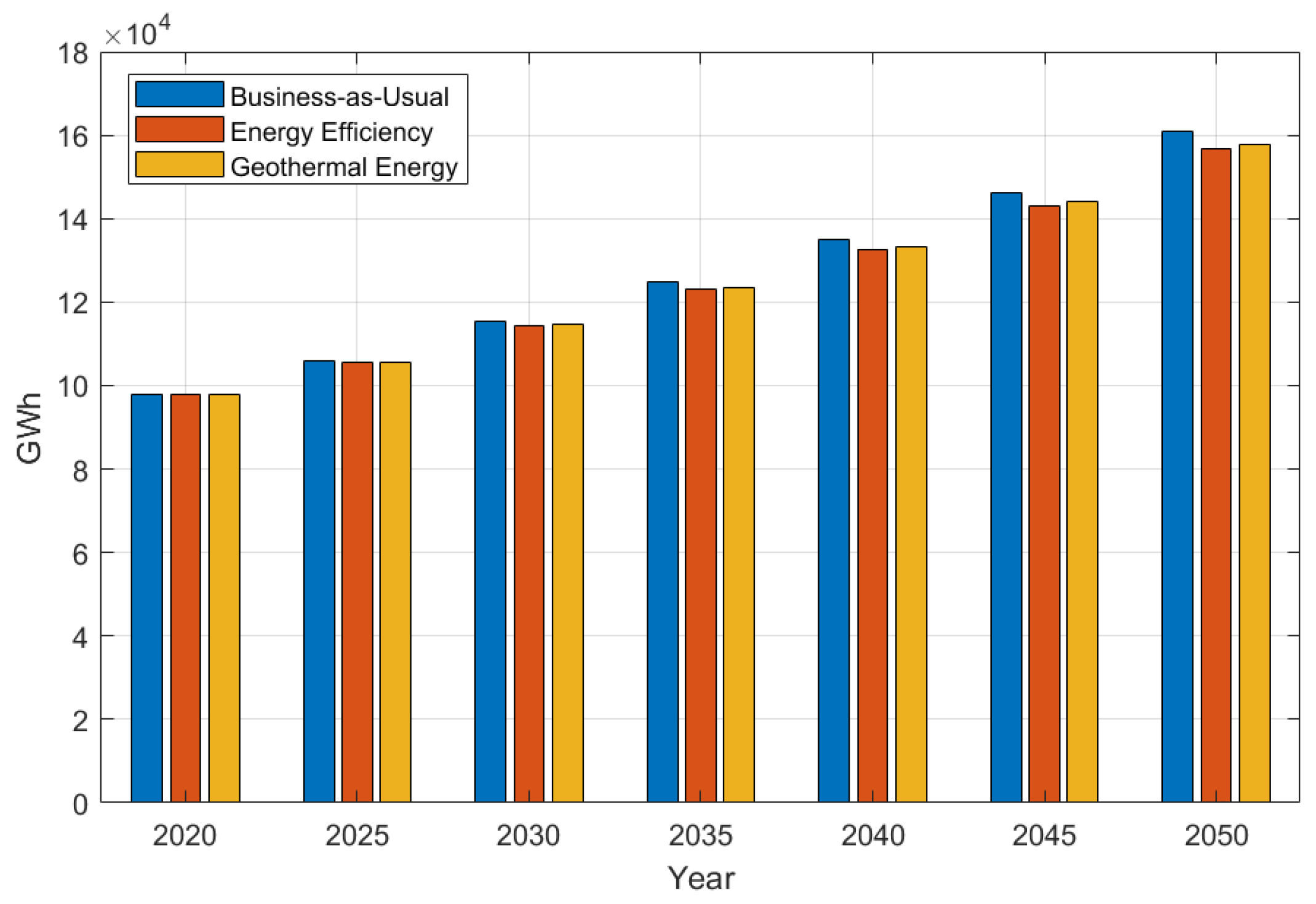
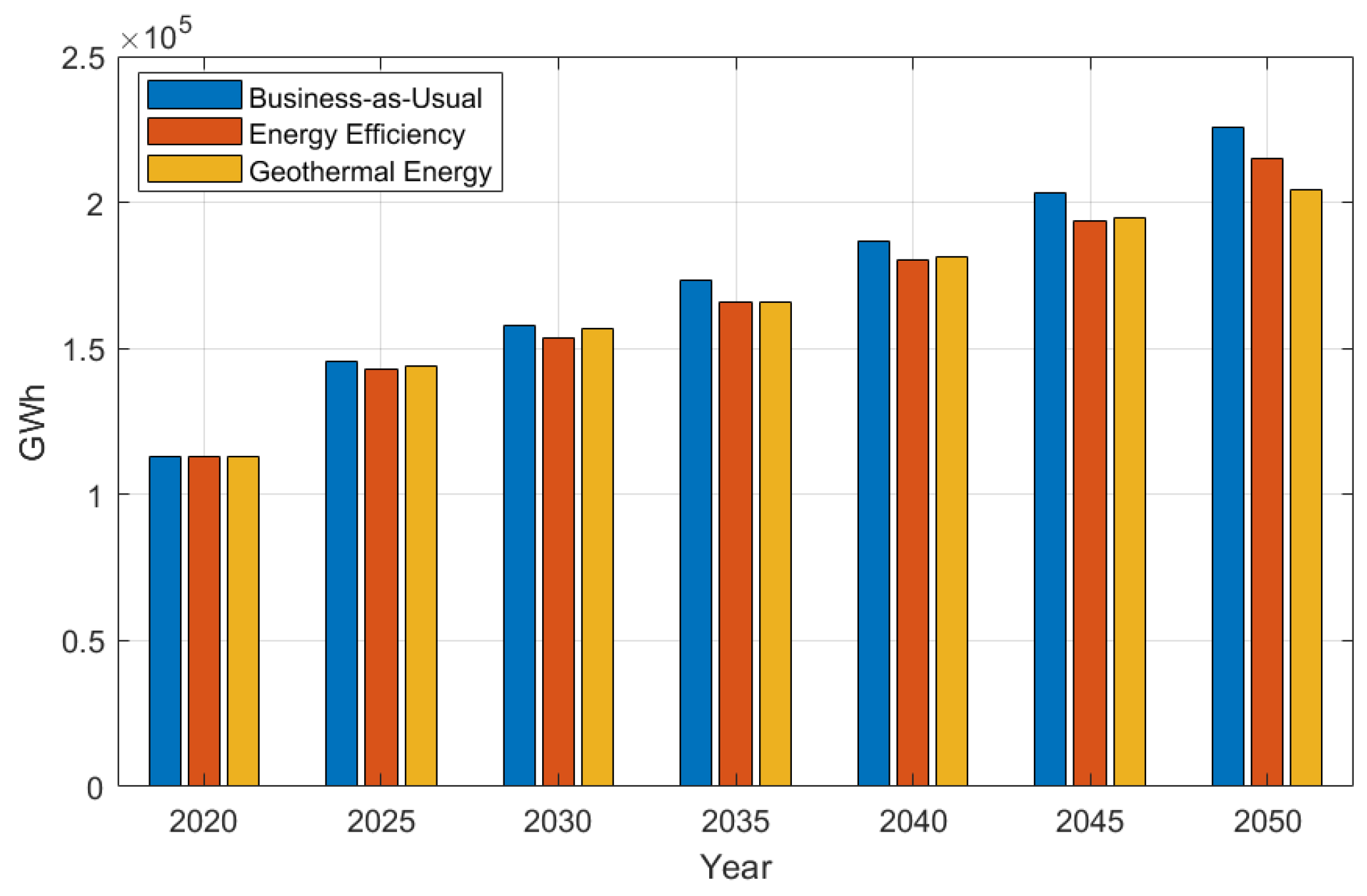
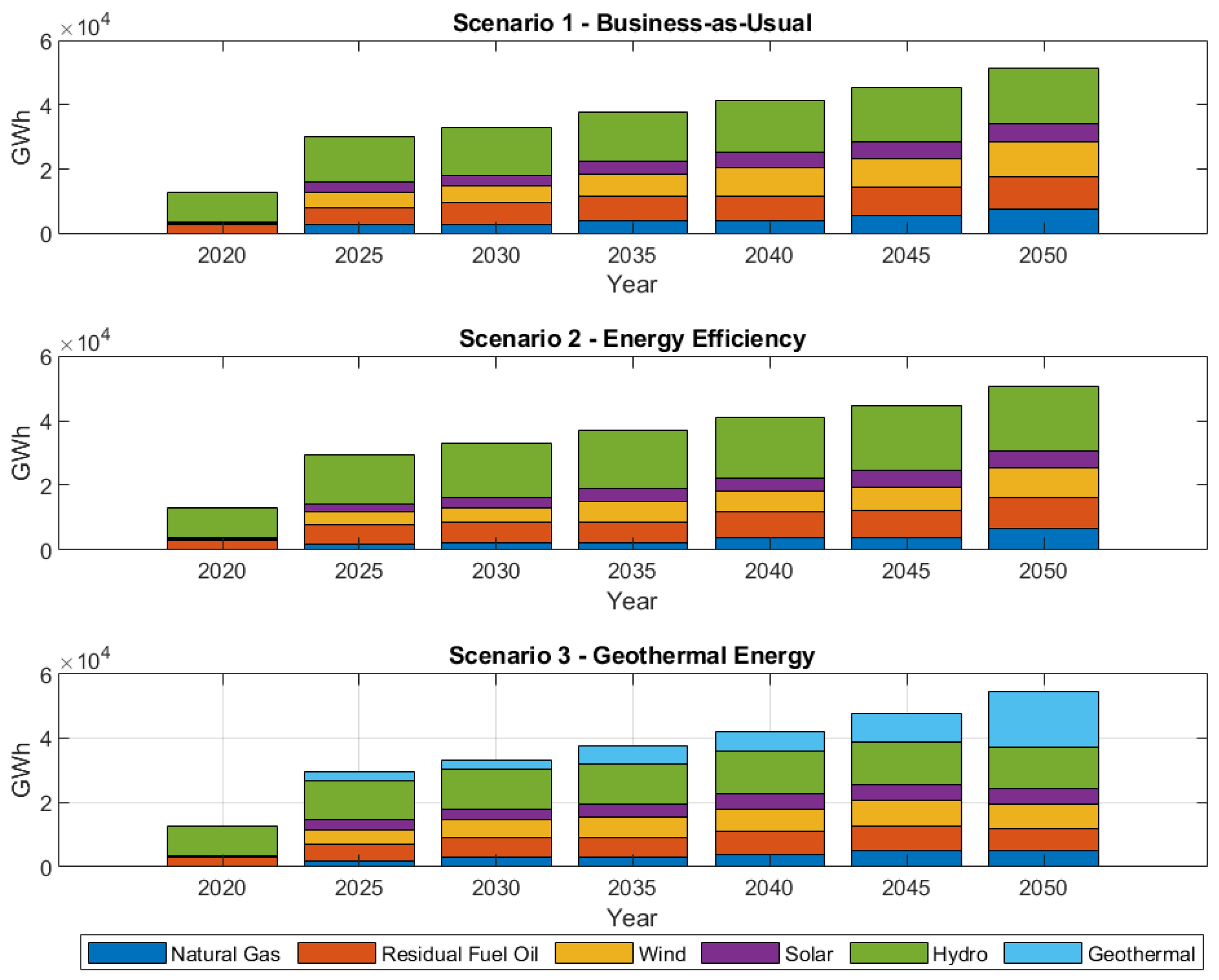
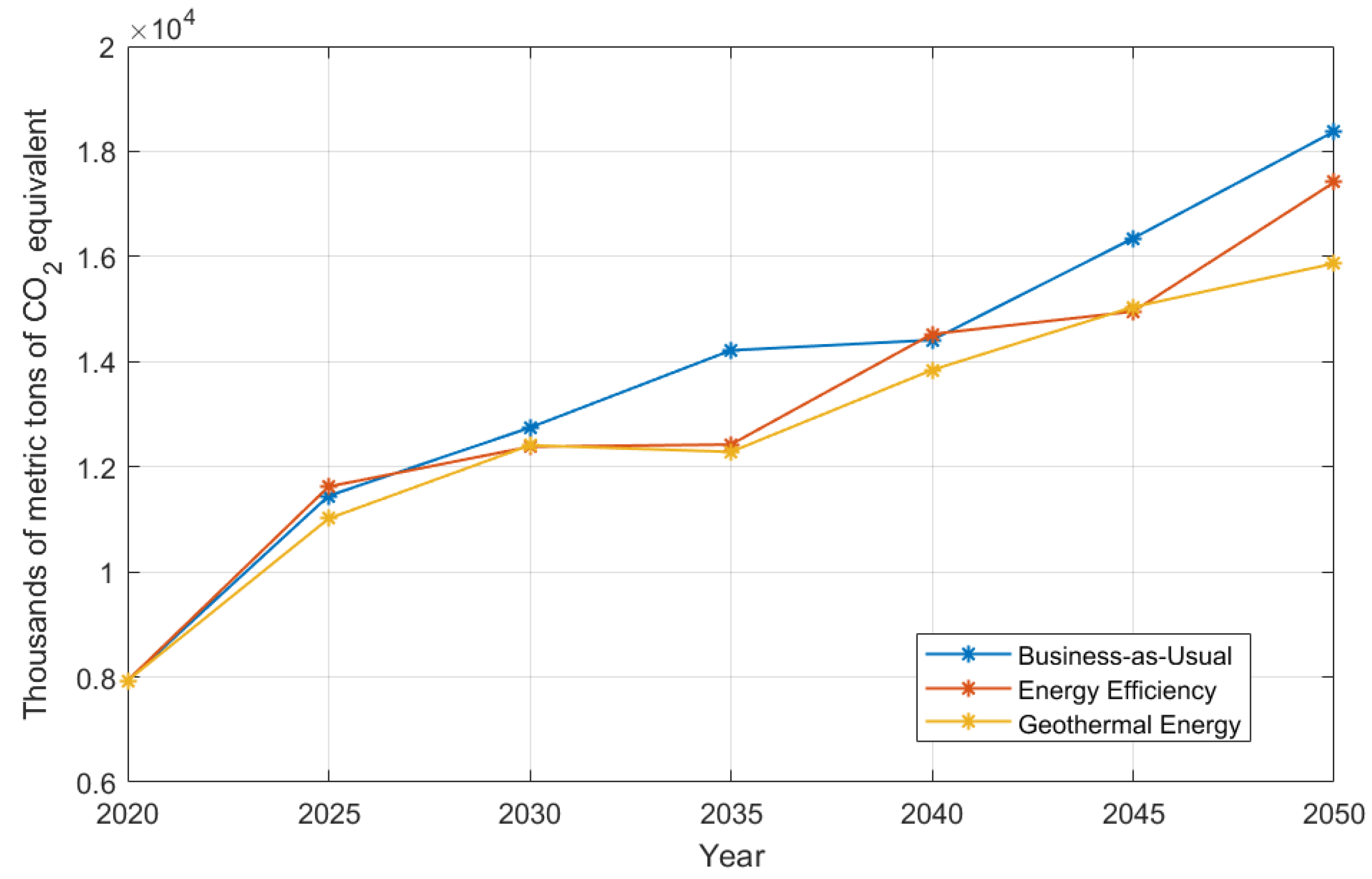
| ine Parameters | Description |
| ine Population in 2020 - 2050 | 32.6 - 39.7 million people [35] |
| Gross Electricity Generation (GEG) | 52743.71 (GWh) [22] |
| Gross Electricity per capita Consumption | 1616.3 (kWh/hab) [22] |
| Gross Electricity per capita Generation | 1404.9 (kWh/hab) [22] |
| Losses in Distribution Systems | 9.6% [22] |
| Environmental Directives | Peruvian Energy Policy [37] |
| ine |
Disclaimer/Publisher’s Note: The statements, opinions and data contained in all publications are solely those of the individual author(s) and contributor(s) and not of MDPI and/or the editor(s). MDPI and/or the editor(s) disclaim responsibility for any injury to people or property resulting from any ideas, methods, instructions or products referred to in the content. |
© 2024 by the authors. Licensee MDPI, Basel, Switzerland. This article is an open access article distributed under the terms and conditions of the Creative Commons Attribution (CC BY) license (http://creativecommons.org/licenses/by/4.0/).





